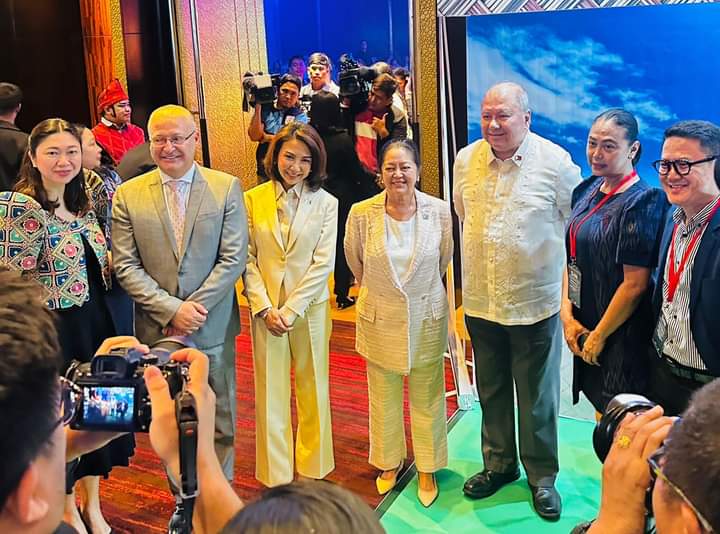A new era in health and wellness tourism rises in the Philippines
By Trixee Rosel

First Lady Louise Araneta Marcos leads the inauguration of the International Health and Wellness Tourism Congress (IHWTC) on Monday, Oct. 14, 2024 in Taguig City. With her are DOT Secretary Christina Garcia-Frasco.
The Philippines is poised to emerge as a premier health and wellness tourism hub, attracting global travelers seeking rejuvenation in paradise.
In a strategic move to diversify its tourism portfolio, the Department of Tourism (DOT) has solidified the country’s position as a key destination for health tourism in the Asia-Pacific region with the launch of the International Health and Wellness Tourism Congress (IHWTC) on Monday, Oct. 14.
The inaugural event, led by DOT Secretary Christina Garcia-Frasco, was officially opened by Philippine First Lady Louise Araneta Marcos, alongside Agora Group CEO Hadi Malaeb and Taguig City Mayor Laarni Lopez Cayetano.
The ceremony featured a symbolic ribbon-cutting and the ringing of bamboo wind chimes, embodying the organic and nurturing essence of health and wellness.
With the theme "Aruga: A Filipino-Inspired Gathering for Global Health and Wellness," the congress showcased the distinctive Filipino perspective on wellness by engaging all five senses.
Delegates from 38 countries, representing over 40 nationalities, gathered to explore the vast potential of medical and wellness tourism in the Philippines.
Frasco emphasized that the Philippines is well-equipped to become a leading destination in the health and wellness sector.
“Both medical and wellness tourism are crucial components of this initiative,” she stated, highlighting the country’s abundance of skilled healthcare professionals and modern facilities.
“We possess the skilled workforce and modern facilities, and we are revising government policies to create a supportive environment for the growth of medical tourism.”
What the Philippines can offer
The Philippine advantage lies in its deep-rooted culture of care, which resonates particularly with visitors from the Middle East.
The unique brand of Filipino hospitality enhances the country's appeal, making it an attractive option for medical travelers.
“The culture of care and compassion shown by Filipinos gives us a strategic advantage,” Frasco noted, fostering trust among international patients seeking treatment.
Prominent destinations like Boracay and Calabarzon are highlighted as wellness havens, where visitors can enjoy healing experiences amid breathtaking natural beauty.
Guests can indulge in signature Filipino treatments such as "hilot" while savoring local cuisine.
“Traveling visitors can heal after their procedures on the beach or in the mountains, experiencing the warmth and hospitality that the Philippines is known for,” Frasco added.
The country boasts 23 internationally accredited health facilities and 63 private hospitals located near major international airports, ensuring swift access to medical care.
With treatment costs significantly lower than in Western nations, the Philippines stands out as a competitive choice for those seeking affordable yet high-quality healthcare.
Additionally, the nation’s reputation as one of the largest English-speaking countries facilitates effective communication between patients and medical personnel.
Frasco highlighted the growth potential in the health and wellness tourism sector, noting that global health and wellness tourism is estimated to be worth between $45.5 billion and $72 billion, with millions of cross-border patients seeking services annually.
Participation in the IHWTC serves as a vital step in elevating the Philippines' profile as a viable destination for medical and wellness tourism on the global stage.
Frasco’s vision extends beyond the Middle East, targeting diverse markets seeking medical care and wellness experiences.
Through strategic partnerships and comprehensive marketing efforts, the Philippines is set for a significant resurgence in tourism, particularly in the health sector, complementing the country's diverse tourism offerings.
As the DOT continues to promote various tourism products and aims for a complete recovery of inbound tourism by 2024, the message is clear: the Philippines is ready to embrace its role as a premier health and wellness destination, inviting travelers to experience the healing power of its natural beauty and compassionate care.